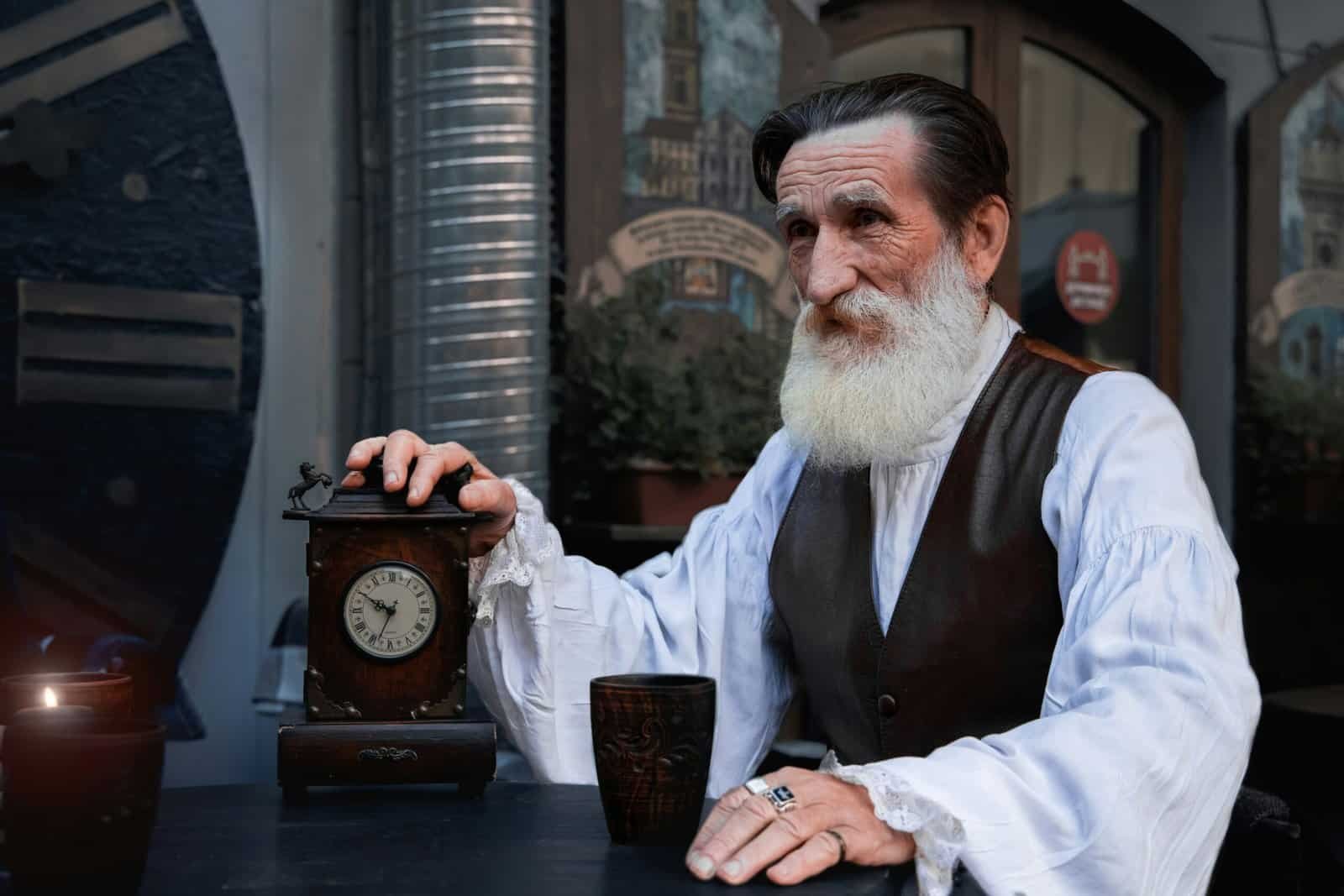It’s time to get your notepads (and favorite brew in hand) because the history of coffee is a super interesting tale, steeped in legend and rich history, tracing back to the ancient coffee forests of the Ethiopian plateau.
According to folklore, a goat herder named Kaldi discovered the potential of coffee beans when he noticed his goats becoming unusually buzzed after eating the fruit from certain trees. The stimulating properties of these beans quickly became valued, and knowledge of this energizing berry quickly spread to other lands.
In Arabian territories, coffee became more than just a casual beverage; it was a cultural phenomenon that influenced social dynamics and intellectual circles. By the 15th century, it had reached the region around modern-day Yemen, where Sufi monasteries utilized coffee’s wakefulness-promoting effects to aid in concentration during long hours of prayer. The beverage gained such importance that it transcended its role as a simple drink, becoming super important to a wide variety of social rituals.
As trade routes expanded, coffee’s reputation as an invigorating drink blossomed throughout the Middle East, Europe, and eventually across the globe. Despite its humble beginnings, coffee soon established itself as a global product and commodity, bringing people together over shared experiences while also fueling industry and innovation. Today, coffee is a ‘must-have’ in daily life for millions, holding a special place in cultures worldwide and continuing to evolve and adapt through a myriad of brewing styles and variations.
The History of Coffee and Origins
Coffee, our beloved beverage, has its roots steeped in ancient cultures, with a legendary Ethiopian beginning, a transformative spread to the Arabian Peninsula, and myths intertwined with its historical significance.
Ethiopian Beginnings
The origins of coffee can be traced back to Ethiopia, where coffee plants first flourished. As mentioned earlier on, our hero goat herder named Kaldi noticed the invigorating effects of the coffee plant on his goats—they were much more lively after consuming its berries. Curiosity led him to experiment and try these berries himself, discovering the potential of what would become a world-renowned beverage.
Spreading the coffee buzz to the Arabian Peninsula
This knowledge and cultivation of coffee expanded from Ethiopia to Yemen and the broader Arabian Peninsula. So much so that by the 15th century, Yemen was a key player in the coffee trade, cultivating and trading coffee extensively. The port city of Mocha in Yemen became synonymous with coffee, further entrenching the region’s significance in coffee history. The first coffee houses, or qahveh khaneh, appeared in cities across the Near East, becoming hubs of social activity and bringing people together to enjoy this magical plant.
The History Of Coffee – Significance and Legends
Coffee’s rise in the Middle East had a massive influence on various aspects of society. Muslims found coffee useful in staying awake during long prayer sessions. As coffee spread into Mecca, it intertwined with religious and social customs. Despite facing some opposition, where it was momentarily considered a sin, coffee emerged as an important cultural element. Intriguingly, some monasteries used coffee for its ability to aid monks in maintaining concentration during prayers, revealing coffee’s incredible role across different walks of life.
Without this religious acceptance, it’s fair to say the history of coffee would be stopped in its tracks very early on.
Global Diffusion
Coffee’s journey from its Ethiopian roots has led to a widespread global presence, notably through trade, and has had significant cultural impacts in various regions.
Trade and Expansion to New Lands
The Ottoman Empire played a crucial role in the expansion of coffee. They introduced the beverage to Persia, Egypt, and Syria. By the 15th century, coffee became a staple in Constantinople, modern-day Istanbul. Ottoman traders also brought coffee to nearby and always innovative Venice, which served as a gateway for coffee’s entrance into Europe.
European Coffee Adoption and Evolution
Looking deeper into the history of coffee, Italy was among the first in Europe to embrace coffee, but it was in England that coffee houses, also known as ‘penny universities’, flourished in the 17th century. These establishments became hubs of intellectual exchange. Similarly, Parisian coffeehouses laid the foundation for what became known as ‘café society’. In London and Paris, coffeehouses served as vital social centres.
The History of Coffee in the Americas
Coffee made its way to the Americas through various channels. The Dutch were instrumental in establishing coffee in the New World, with successful cultivation in the Caribbean and Latin America. A notable figure was Gabriel de Clieu, who, under the auspices of King Louis XIV, transported seedlings to Martinique.
This simple act led to the unstoppable juggernaut of coffee throughout the region, notably in Brazil, pivotal in establishing the Americas as a potent force in global coffee production that we know all about today!
Coffee’s Cultural and Social Impact
Coffee has not only warmed cups but also shaped societies. Coffeehouses over the years have emerged as vibrant social hubs, facilitating intellectual exchange and debate, while a good cup of joe has itself stirred religious and political realms and intertwined with the tapestry of art and literature.
Coffeehouses as Social Hubs
In cities like London, Paris, and Vienna, coffeehouses earned the nickname “penny universities”. For a penny, a person could enjoy a coffee and engage in scholarly and social discourse. These establishments became the nerve centers of society, fostering an environment where ideas and information flowed as freely as the coffee being served.
Coffee’s Influence on Religion and Politics
The popularity of coffeehouses drew the suspicion of political and religious authorities. In Mecca, coffee sparked religious debates and faced prohibition as it was deemed a potential catalyst for political dissent. The Muslim-majority Ottoman Empire also experienced a tug-of-war with coffee, where it saw periods of prohibition and approval. Yet, coffee triumphed in the end, its social clout often overshadowing efforts to suppress it.
Art and Literature’s Connection To The History of Coffee
Coffee and coffeehouses have always provided fertile ground for artistic and literary circles. Many famous works of art and literature were conceived in the bustling ambience of these social havens. Coffee facilitated vibrant discussions and became synonymous with the artistic and literary movements of their respective periods, reflecting the pulse of societal change.
The History of Coffee In The Modern Era and Commercialization
In the modern era, the history of coffee has transformed from a traditional beverage into a symbol of urban lifestyle and culture, spurred by industrial innovation and the emergence of leading coffee brands that have left a profound impact on the global market.
Industrialization and Innovation in Coffee
With the onset of industrialization, it’s safe to say coffee production underwent significant changes. Innovations in technology led to the mass production of instant coffee, which provided convenience (if not taste…) for consumers worldwide.
This innovation expanded the market, allowing coffee to become a staple in homes and workplaces. Robusta and Arabica beans became the cornerstone of commercial production, with Robusta favored for its resilience and higher caffeine content. Plantations expanded to meet growing demand, which resulted in the establishment of coffee as one of the most profitable and widely traded commodities all across the globe.
The increase in ground and roasted options in retail outlets has also made it so much easier for people to enjoy coffee shop quality brews at home. Equipment like espresso machines, which once were used exclusively in coffee shops, started becoming common household appliances over the past few decades, further integrating the love of richly brewed coffee into daily life.
The Rise of The Coffee Giants and Global Coffee Market
The global market has seen the rise of coffee giants like Starbucks, which played a pivotal role in shaping modern coffee culture all over the globe. Starbucks not only popularized drinks such as lattes and cappuccinos but also created a “third place” between work and home where people could relax and socialize.
This commercial landscape of coffee evolved into a diverse and competitive arena with numerous companies vying for a share of the profits. Coffee shop chains proliferated, each bringing their unique take on coffee culture and customer experience.
The interaction between coffee culture and consumerism has led to constant innovation, shaping the daily lives of millions and driving the global market to new heights. As a result, the contemporary landscape of coffee is a complex interweaving of tradition and modernity—the product of centuries of history now brewed into the fabric of everyday life.
Now, let’s go and grab a cup of our favorite brew!





1 thought on “The History of Coffee: Everything You Need To Know”
Comments are closed.